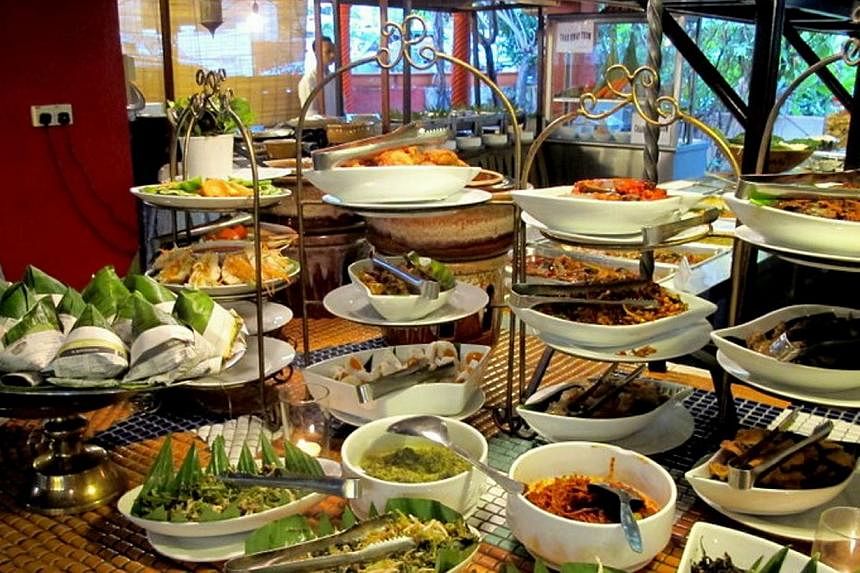The list of Asia's 50 Best Restaurants, announced on Monday night, threw up no big surprises.
On the list were the usual suspects, many of them repeats from last year's list and that of 2013, when the awards were first given out. These are the sorts of restaurants that international foodies might visit, and I cannot help but think the list should have been more interesting and diverse.
After all, there was a major change in the voting system this year. Instead of putting together Asia's best restaurants from votes by the 900 panel members picking the World's best, organisers William Reed Business Media, the publisher of trade magazine Restaurant, decided to convene a smaller group of about 300 voters based in Asia. Asia's 50 Best Restaurants is sponsored by S. Pellegrino and Acqua Panna.
The smaller panel of voters consists of people in the restaurant industry, food writers, critics, chefs, restaurateurs and "highly regarded foodies".
Latin America's 50 Best Restaurants list, which like Asia's debuted in 2013, has had a dedicated panel of voters from the start.
This makes a lot of sense; the voters know the regions, travel widely within them and presumably know the food scenes well. They tend to be cosmopolitan ones who are at home anywhere in the world, and would know a good restaurant when they eat in one, wherever they may be.
Yet, with the Asia list, things might not have changed at all.
Looking at it on awards night, I kept coming upon name after familiar name from previous Asia's and World's best lists.
Asia covers these economies: Bangladesh, Bhutan, Myanmar, Brunei, Cambodia, China, Hong Kong, India, Indonesia, Japan, South Korea, Laos, Macau, Malaysia, Maldives, Micronesia, Nauru, Nepal, Pakistan, the Philippines, Singapore, Sri Lanka, Taiwan, Thailand, Timor Leste and Vietnam.
Yet, the list is dominated by a handful of countries and cities: China (six restaurants), Hong Kong (nine), Japan (eight), Singapore (10) and Thailand (five). Together, they account for 38 of the 50 restaurants. There were just two new entries from countries new to the list: Antonio's from Tagaytay in the Philippines (48) and Cuisine Wat Damnak from Siem Reap in Cambodia (50).
I had great hopes for the new Asia voting panel, of which I am a member. This was a chance to uncover hidden gems that the rest of the world needs to know about; to celebrate amazing chefs doing great work in second-tier cities, and the restaurants that are showcasing local food in imaginative ways.
But it seems we all voted too safely, too conservatively. Where is Locavore, a Bali restaurant I have heard so much about and which even chefs praise?
Where is Yu Zhi Lan, an 18-seat restaurant serving classic Chinese cuisine in Chengdu? Its chef Lan Guijun seeks culinary perfection the way top chefs do - and are rewarded for - in all the foodie capitals.
And what of Malaysia? It has a thriving food scene as diverse as Singapore's but none of its restaurants has made the cut. That is inexplicable. And are there no restaurants in Vietnam worthy of being on the list?
Of course I am not saying people should vote in restaurants just for the sake of getting the country represented. No. Their choices should offer great food, ambience and service.
Yet, many of the restaurants on the Asia and World lists puzzle me. They make me wonder if we are experiencing group think, voting for places we know others will relate to or restaurants that have already been on the list. If they were good enough last year, perhaps they are good enough this year too.
I think it is time to break out of that and see if we can put together a list that is unpredictable and filled with great restaurants that will persuade travellers to Asia to strike out beyond the talked- about restaurants that everybody makes a beeline for.
For starters, I would like to see a restaurant serving Peranakan food on the list. The sophisticated cooking techniques and the nuanced flavours of the cuisine should be known worldwide.
If there is no Peranakan restaurant here good enough to be on the list, might there be one in Malaysia?
As good as they are, and I think they all deserve to be on that list, none of the 10 Singapore restaurants showcases the rich diversity of local food.
Young chefs here are doing interesting things with local ingredients such as salted egg yolks, black chicken, and the dried figs usually used in double-boiled soups. They are using their food memories to create dishes where new and old exist beautifully on a plate. Surely they deserve to be recognised?
This is also a call-out to chefs.
Up your game, be consistent, take risks, blow diners' minds. Get our food out there on the world stage.
Next year, I would like to sit in the auditorium and not feel like it is all deja vu. It would make my night to be surprised and intrigued.

